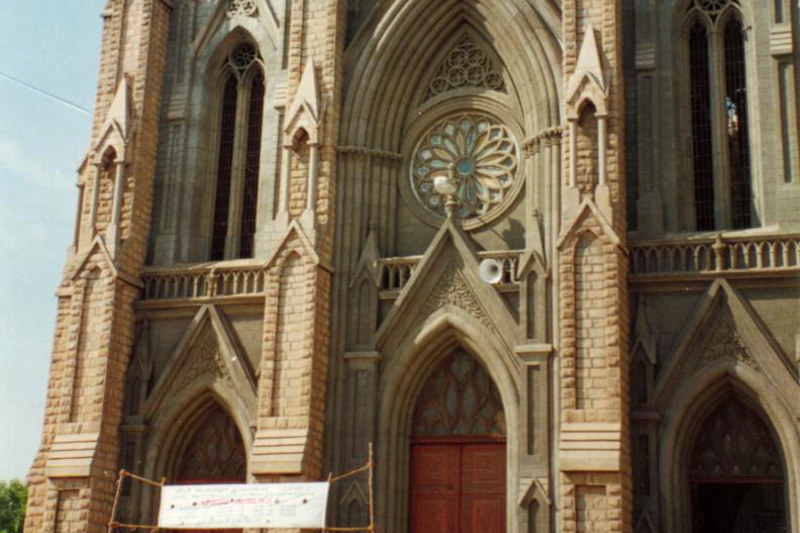Next we went to St. Philomena’s Church. We skipped the zoo, which I am glad of because I’m not a big fan of zoos. The church was huge and is supposed to be the largest in India. I think I was a bit disrespectful as I ate a bit of a pineapple in front of a big Jesus on a cross. People were staring at me and a little old lady chased after me with a broom.
Downstairs in the catacombs it was much more interesting; there was no one was in the catacombs but Sheeva, Santhos and I. Neither believed me when I mentioned that catacombs traditionally had bodies buried behind the walls, and that the names carved into little plaques on the walls were those of the deceased. It was too dark to read any of the plaques because the power was out.
In giving my little catacomb spiel I managed to scare myself, as we were walking through the passageways I could hear scurrying feet but could see nothing because it was completely dark; it was like the sound of a small child running, and of course there was no one else there but the three of us. I kept saying: “I didn’t hear that. I didn’t hear that” as we walked down the passages.
In the centre of one passageway there was a locked gate. Behind it we could barely make out the form of a body covered in a sheet. Our imaginations ran away for a bit and we speculated as to what it was: going from a corpse all the way to a statue. I finally set off the flash on my camera and could see that it was a statue. We later discovered that this was the crypt where a statue of St. Philomena, a 3rd century AD saint from Greece, is kept. The statue is in sleeping posture and within it is a preserved piece of her bone.
Destinations:

3 comments on “St. Philomena’s Church”Add yours →